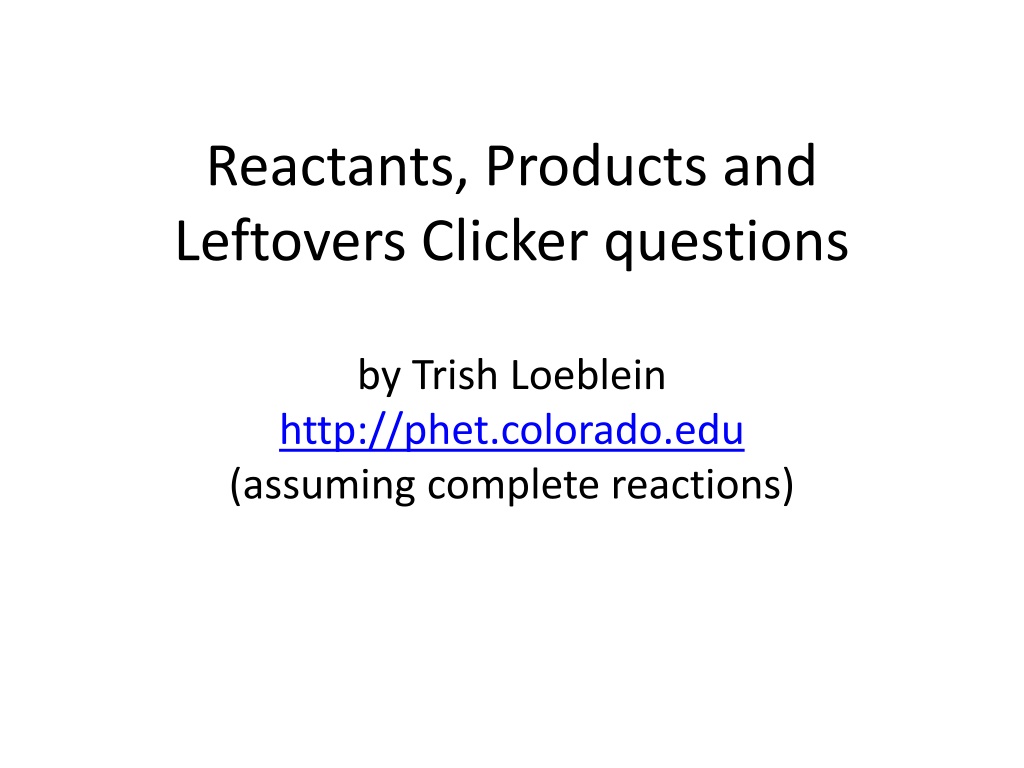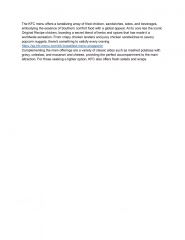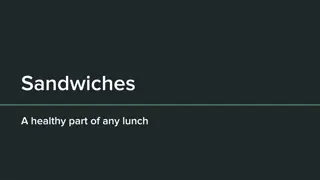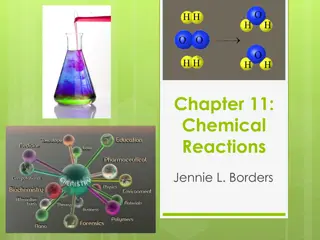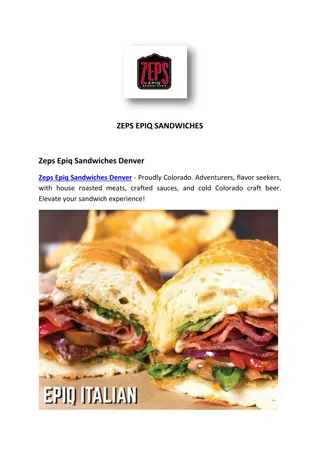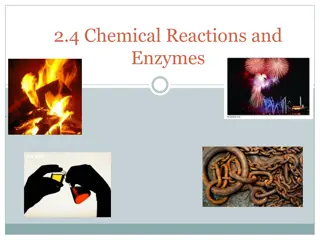Explore Chemical Reactions with Sandwiches Activity
Engage in a hands-on activity relating sandwich-making to chemical reactions, focusing on concepts like limiting reactants and the Law of Conservation of Particles. Through visual representations and interactive questions, delve into the similarities between sandwich ingredients and chemical reactants.
Download Presentation

Please find below an Image/Link to download the presentation.
The content on the website is provided AS IS for your information and personal use only. It may not be sold, licensed, or shared on other websites without obtaining consent from the author. Download presentation by click this link. If you encounter any issues during the download, it is possible that the publisher has removed the file from their server.
E N D
Presentation Transcript
Reactants, Products and Leftovers Clicker questions by Trish Loeblein http://phet.colorado.edu (assuming complete reactions)
Reactants, Products, and Leftovers Activity 1: Introduction to Chemical reactions by Trish Loeblein http://phet.colorado.edu Learning Goals: Students will be able to: Relate the real-world example of making sandwiches to chemical reactions Describe what limiting reactant means using examples of sandwiches and chemicals at a particle level. Identify the limiting reactant in a chemical reaction Use your own words to explain the Law of Conservation of Particles means using examples of sandwiches and chemical reaction
1. Making a cheese sandwich can be represented by the chemical equation: 2 Bd + Ch Bd2Ch What would you expect a sandwich to look like? A B C D
2. Making a cheese sandwich can be represented by the chemical equation: Bd2+ 2Ch 2BdCh What would you expect a sandwich to look like? A B C D
3. Making a cheese sandwich can be represented by the chemical equation: 2 Bd + Ch Bd2Ch What does the 2 on the left side of the chemical equation represent? A. 2 pieces of bread stuck together B. 2 separate pieces of bread C. 2 loaves of bread
4. Making a cheese sandwich can be represented by the chemical equation: Bd2+ 2Ch 2BdCh What does the 2 on the left side of the chemical equation represent? A. 2 pieces of bread stuck together B. 2 separate pieces of bread C. 2 loaves of bread
5. A menu at the Chemistry Caf shows a sandwich: BdM2Ch What would you expect a sandwich to have? A. 2 pieces of bread, 2 pieces of meat, 1 piece of cheese B. 1 piece of bread, 2 pieces of meat, 1 piece of cheese C. 2 loaves of bread
6. A menu at the Chemistry Caf describes a sandwich as 3 pieces of bread, one meat and 2 cheeses. What would you expect a sandwich name to be? A. Bd2MCh2 B. Bd3M2Ch C. Bd3MCh2
7. The Chemistry Caf owner was out of bread. She went to the bakery next door and bought a loaf which had 33 slices. Then she sells 12 sandwiches, which need 2 pieces of bread each. How much bread did she have left? A. 21 B. 9 C. None, she gave the leftovers to the birds
8. The Chemistry Caf cook has a loaf which had 33 slices and a package of cheese that has 15 slices. He is making sandwiches that have 2 pieces of both bread and cheese. How many sandwiches can he make? A.16 B.15 C.7
Reactants, Products, and Leftovers Activity 2: Limiting Reactants in Chemical reactions by Trish Loeblein http://phet.colorado.edu (assuming complete reactions) Learning Goals: Students will be able to: Predict the amounts of products and leftovers after reaction using the concept of limiting reactant Predict the initial amounts of reactants given the amount of products and leftovers using the concept of limiting reactant Translate from symbolic (chemical formula) to molecular (pictorial) representations of matter Explain how subscripts and coefficients are used to solve limiting reactant problems.
1. A mixture of 4 moles of H2 and 3 moles of O2 reacts to make water. Identify: limiting reactant, excess reactant, and how much is unreacted. Limiting Excess reactant reactant A. H2 1 mole H2 B. H2 1 mole O2 C. O2 1 mole H2 D. O2 1 mole O2 E. No reaction occurs since the equation does not balance with 4 mole H2 and 3 mole O2
2. A mixture of 6 moles of H2 and 2 moles of O2 reacts to make water. How much water is made? A. 6 moles water B. 2 moles water C. 3 moles water D. 4 moles water E. No reaction occurs since the equation does not balance with 6 mole H2 and 2 mole O2
3. A mixture of 2.5 moles of Na and 1.8 moles of Cl2 reacts to make NaCl. Identify: limiting reactant, excess reactant, and how much is unreacted. Limiting Excess reactant reactant A. Na 0.7 mole Na B. Na 0.7 mole Cl2 C. Na 0.55 mole Cl2 D. Cl2 0.7 mole Na E. Cl2 1 mole Na
4. A mixture of 2.5 moles of Na and 1.8 moles of Cl2 reacts to make NaCl. How much sodium chloride is made? A.2.5 moles NaCl B. 1.8 moles NaCl C. 0.7 moles NaCl D. 0.55 moles NaCl E. 1 mole Nacl
5. The reaction for combustion of methane is Given the shown amounts for each reactant, predict the amounts of products and leftovers after complete reaction.
5. What are the amounts after the reaction? Initial: 7 CH4and 3 O2 After: A.6 1 1 2 B.1 6 1 2 C. 1 0 6 12 D.4 0 4 8
6. Given the shown amounts for the products and leftovers after a complete reaction, predict the initial reactants.
6. What are the amounts before the reaction? After: 5 NH3 0 O2 4 NO2 6 H2O Before: A. 4 7 B. 9 7 C. 10 7 D. 4 0
7. Given the shown amounts for the products and leftovers after a complete reaction, predict the initial reactants.
7. What are the amounts before the reaction? After: 8 C2H2 4 O2 4 CO2 2 H2O Before: A. 2 10 B.12 10 C. 10 9 D. 8 4
8. A mixture of S atoms ( ) and O2 molecules ( ) in a closed container is represented by the diagrams: Which equation best describes this reaction? A. 3X + 8Y X3Y8 B. X3 + Y8 3XY2 + 2Y C. X + 2Y XY2 D. 3X + 8Y 3XY2 + 2Y E. X3 + Y8 3XY2 + Y2 From Lancaster/Perkins activity
9. An initial mixture of sulfur( ) and oxygen( )is represented: Using this equation: 2S + 3O2 what would the results look like? 2SO3, From Lancaster/Perkins activity
9. Before: S O2 2S + 3O2 2SO3 A B C D E From Lancaster/Perkins activity
10. Before: S O2 2S + 3O2 2SO3 Which is the limiting reactant? A. Sulfur B. Oxygen C. Neither they are both completely used From Lancaster/Perkins activity
